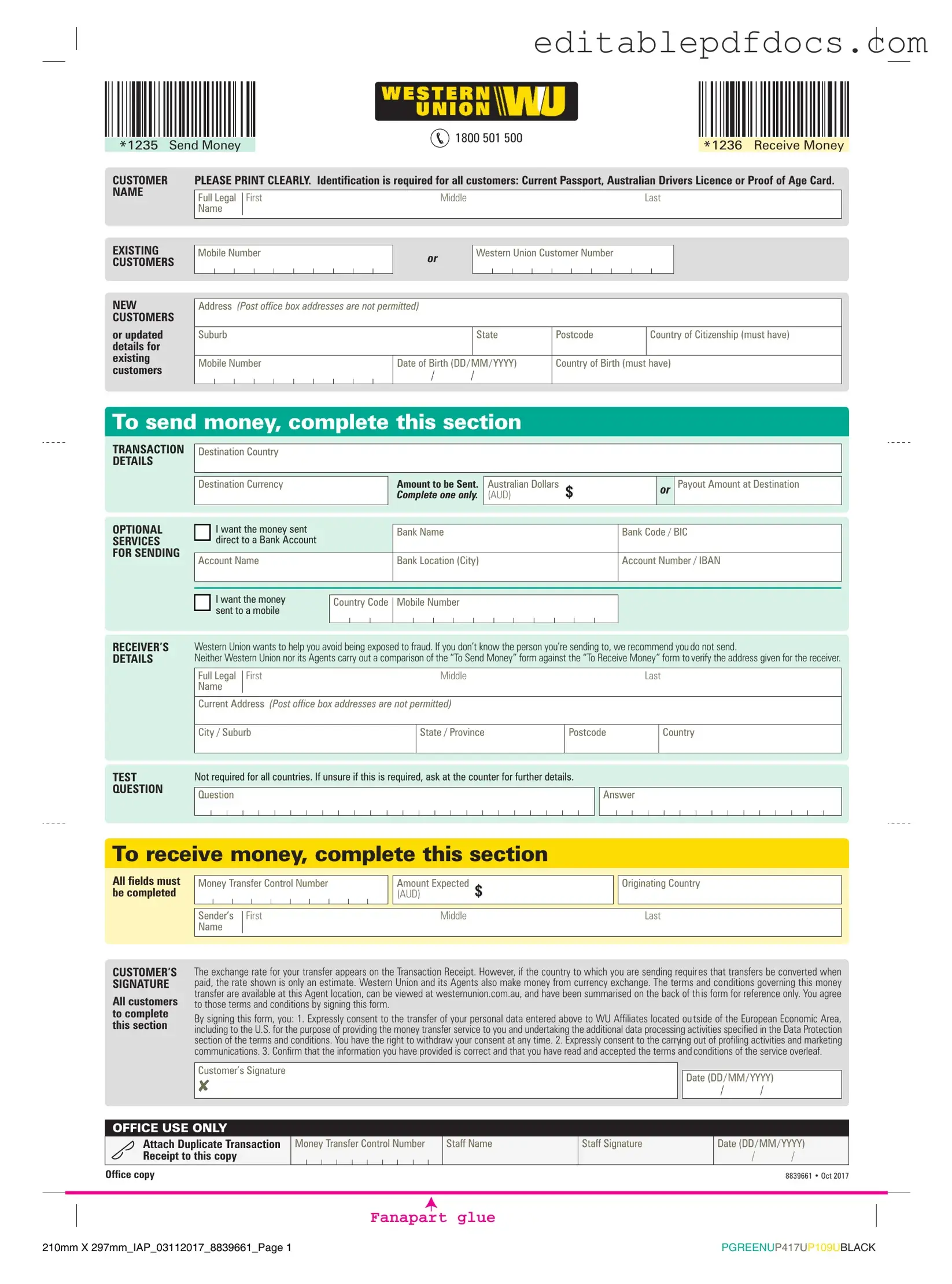When individuals fill out the Western Union form, several common mistakes can lead to delays or complications in their transactions. One prevalent error is providing incorrect recipient information. It is crucial to ensure that the name, address, and contact details of the recipient are accurate. A simple typo can result in the funds being sent to the wrong person or location.
Another frequent mistake involves the selection of the payment method. Users often overlook the various options available, such as credit cards, debit cards, or cash payments. Choosing the wrong method can complicate the transaction process and may lead to additional fees or rejected payments.
Inadequate attention to the amount being sent is also a common issue. People may miscalculate the total, forgetting to include transaction fees or mistakenly entering the wrong figure. This can create confusion and necessitate further communication with Western Union to rectify the error.
Additionally, individuals sometimes fail to review the terms and conditions associated with the transaction. Ignoring these details can result in misunderstandings regarding the service fees, delivery times, or refund policies. It is essential to read through this information to avoid unexpected surprises.
Another mistake arises when users neglect to check their own personal information. Errors in the sender's name, address, or contact number can lead to complications when tracking the transaction or resolving issues that may arise.
Moreover, individuals often underestimate the importance of providing a valid form of identification. Many transactions require identification to verify the sender's identity. Failing to provide this can lead to delays or even a refusal of service.
In some cases, users may skip the step of confirming the transaction details before submission. This oversight can lead to sending incorrect amounts or to the wrong recipient. Taking a moment to double-check all information can save time and prevent frustration.
Another common error is neglecting to keep a record of the transaction details. Users should always save the receipt or confirmation number for future reference. This information is vital if there are any issues with the transfer or if the recipient does not receive the funds.
Lastly, many individuals do not consider the time it takes for the funds to be available to the recipient. Different payment methods and locations can affect the speed of the transaction. Being aware of these factors can help set realistic expectations for both the sender and the recipient.
